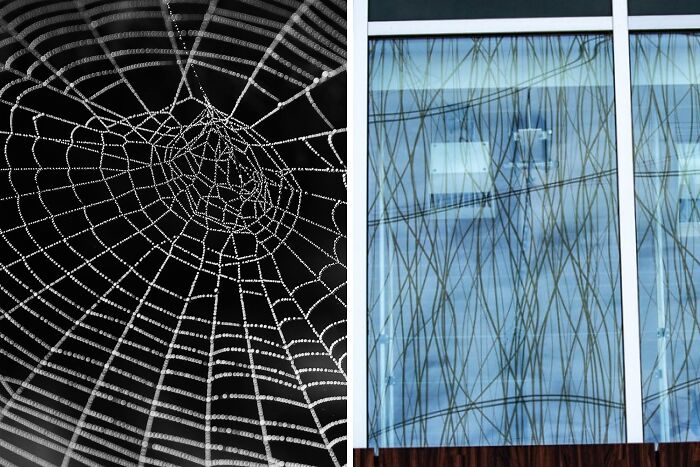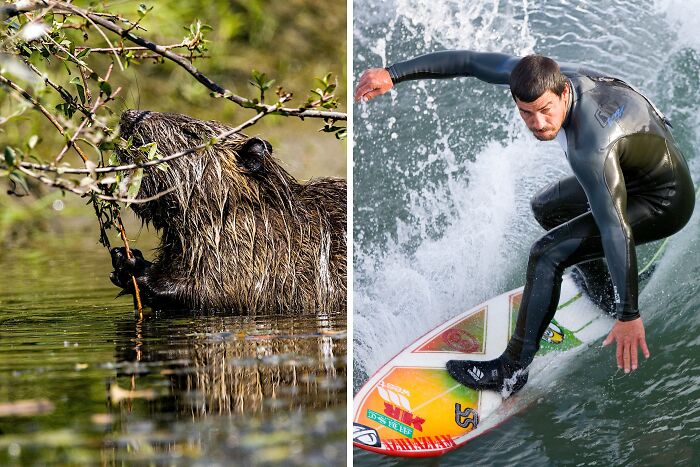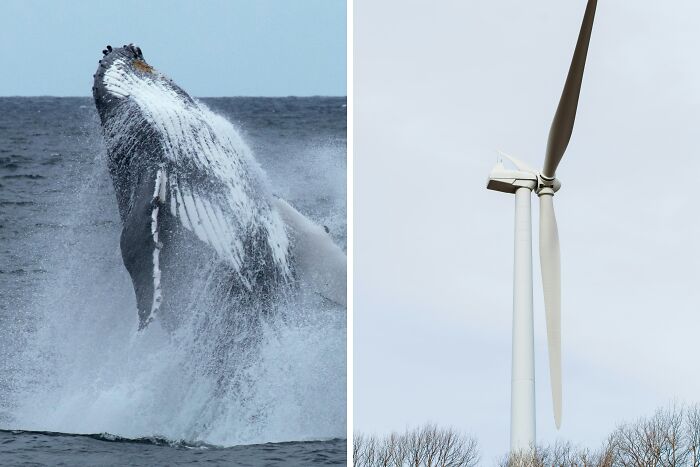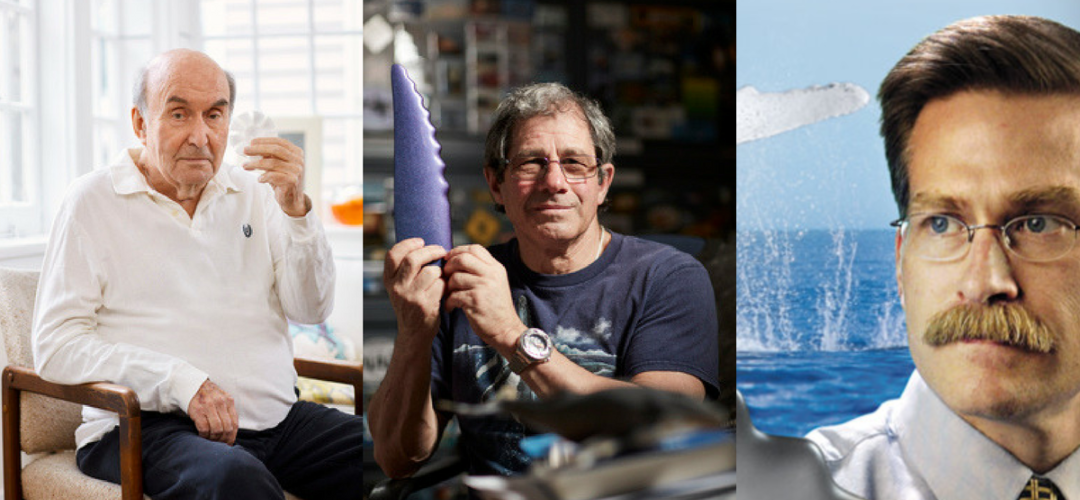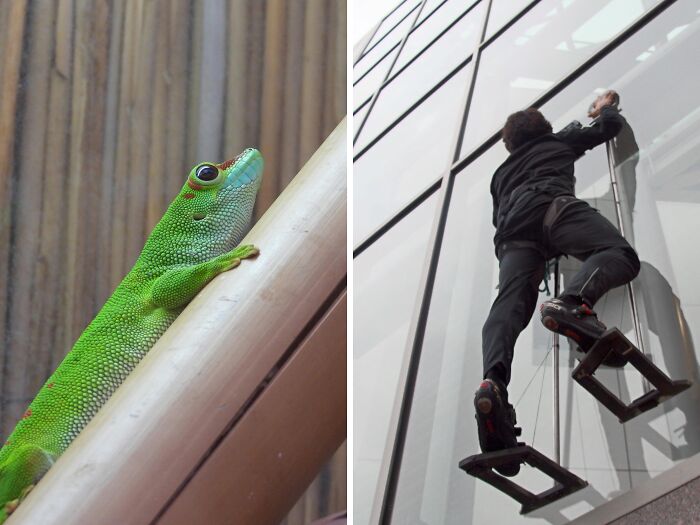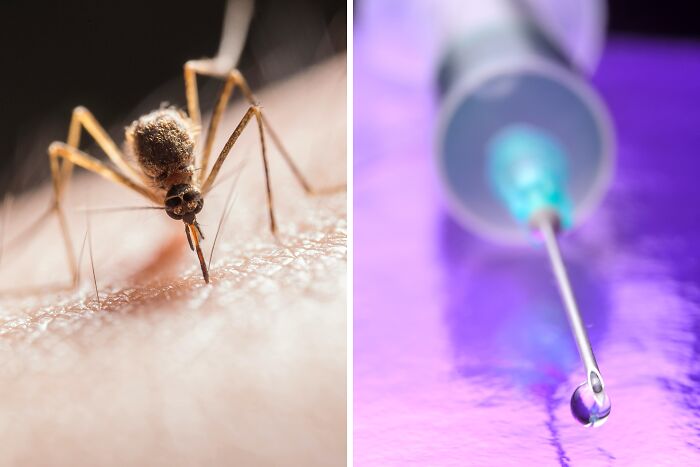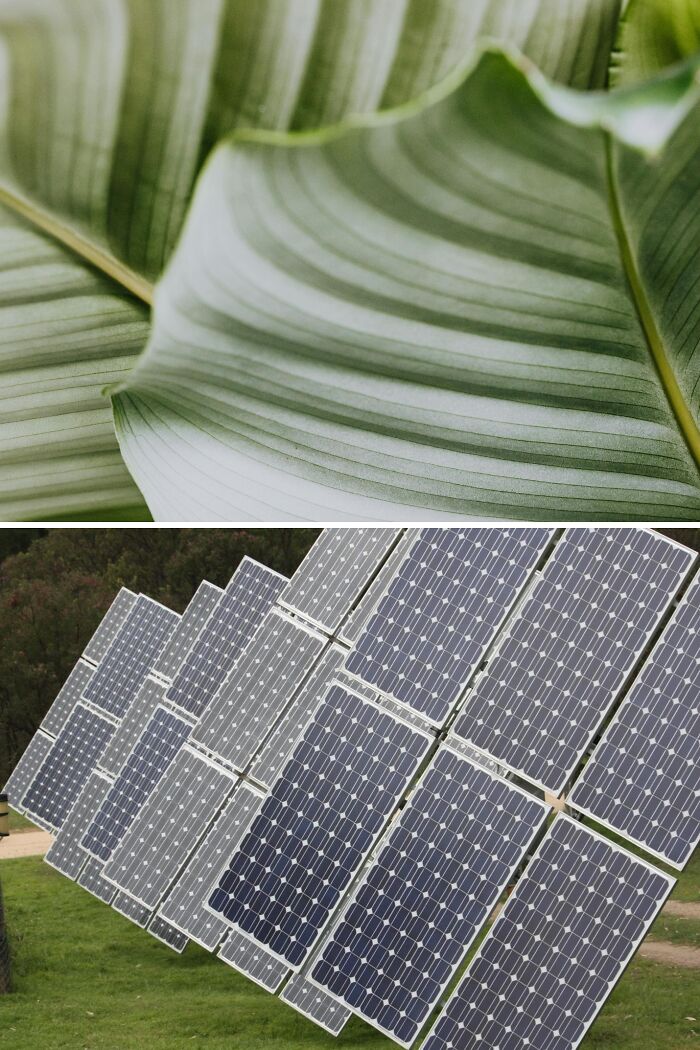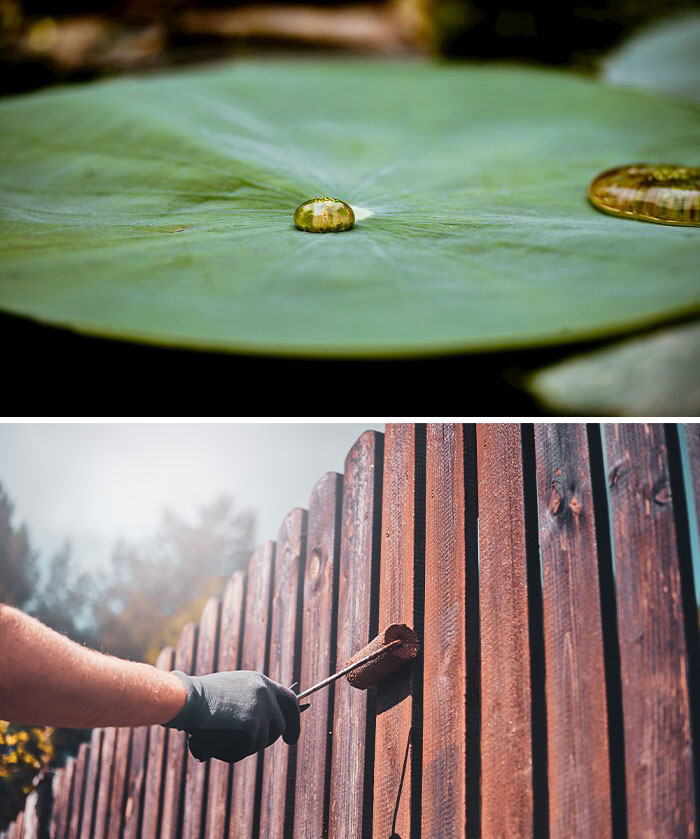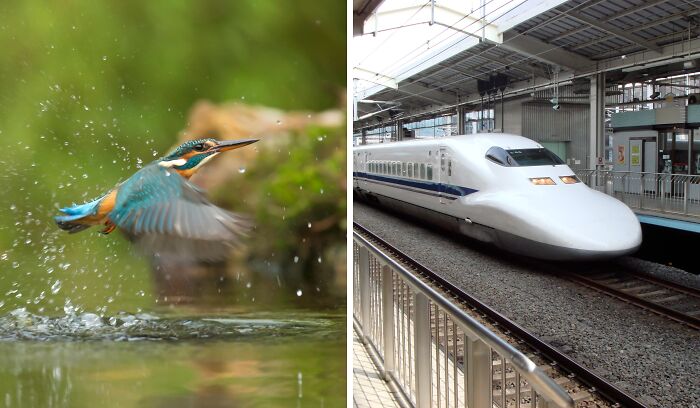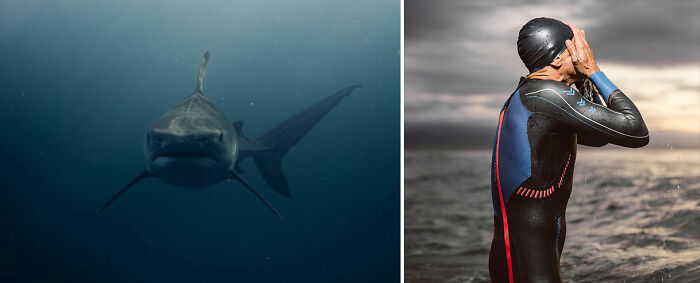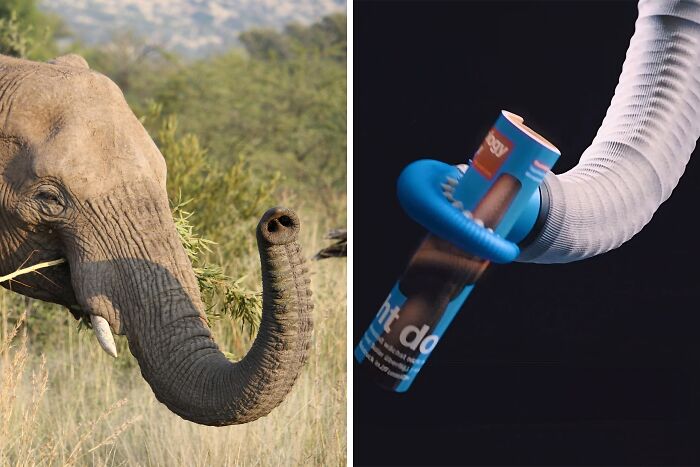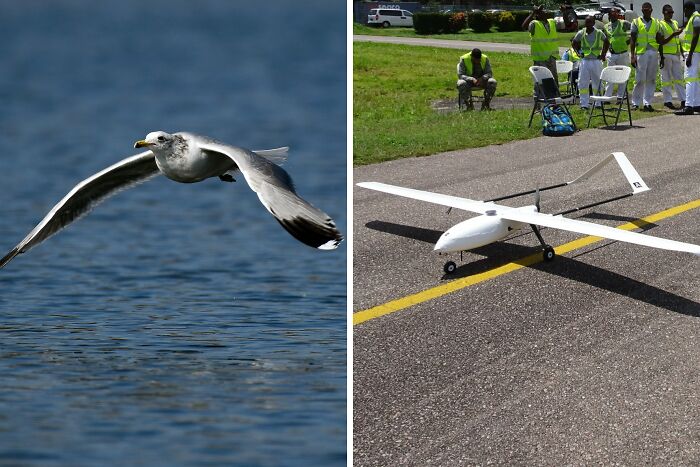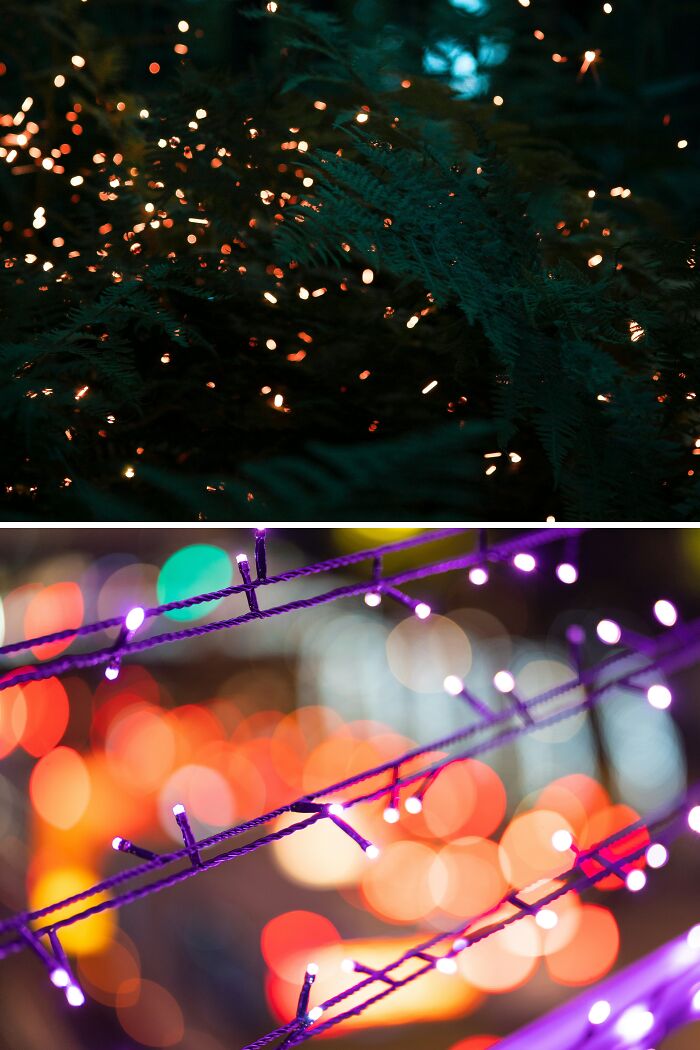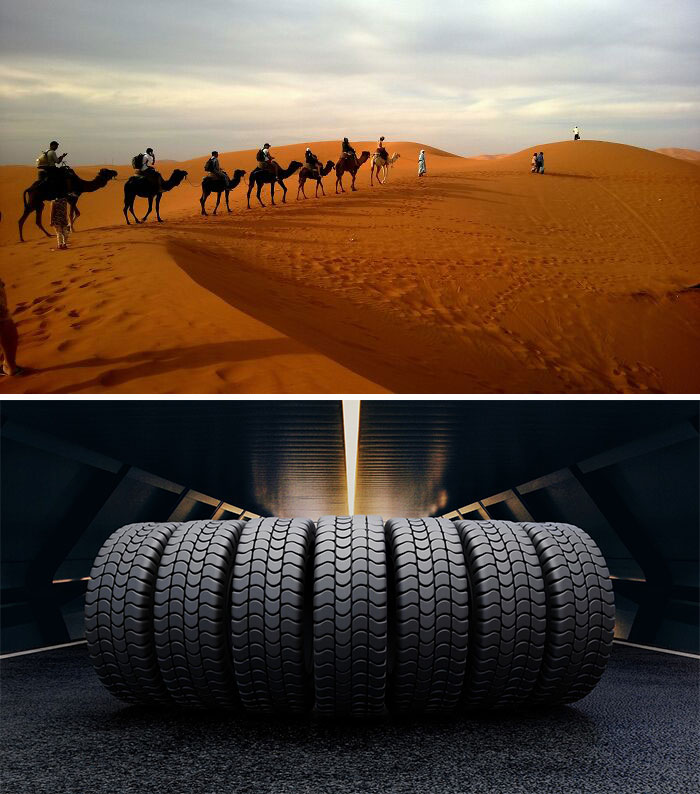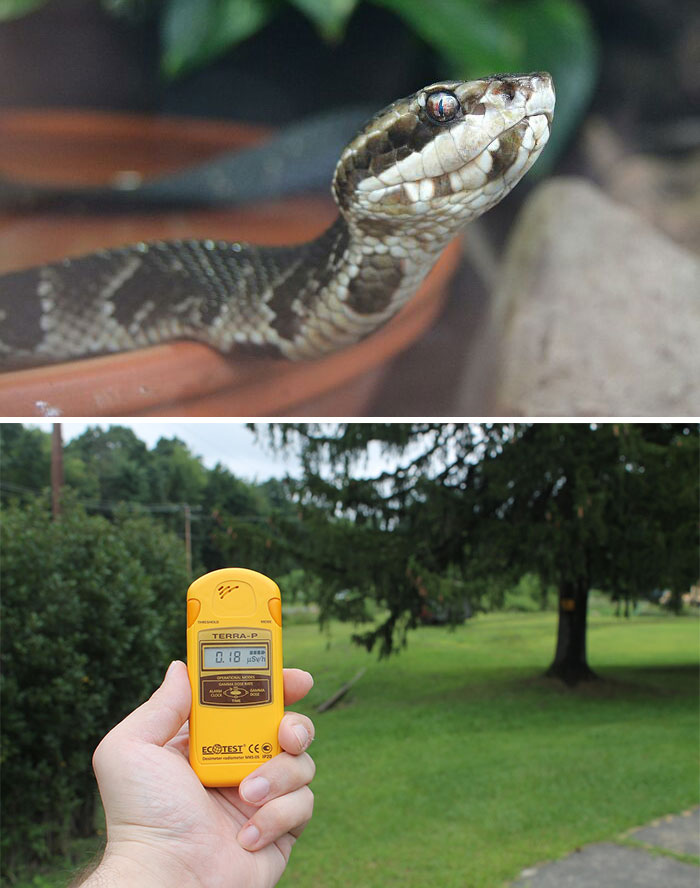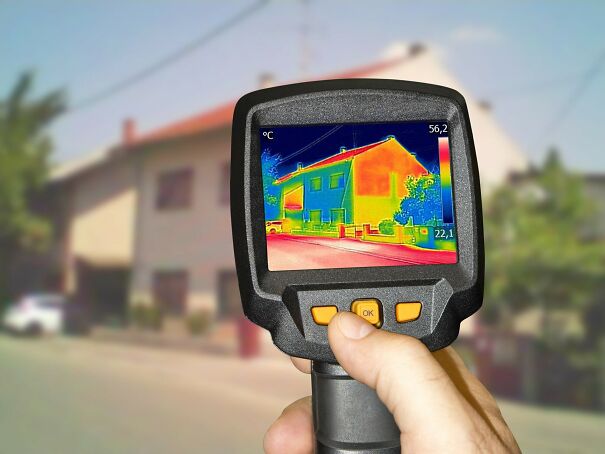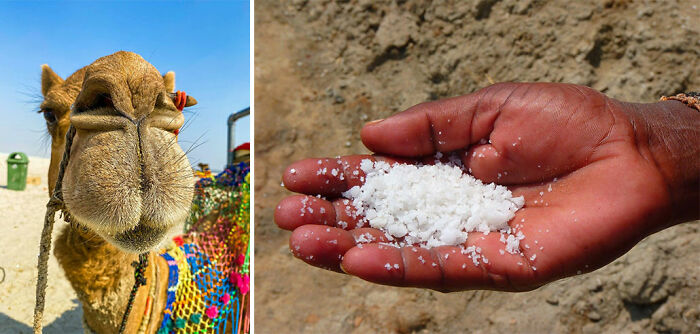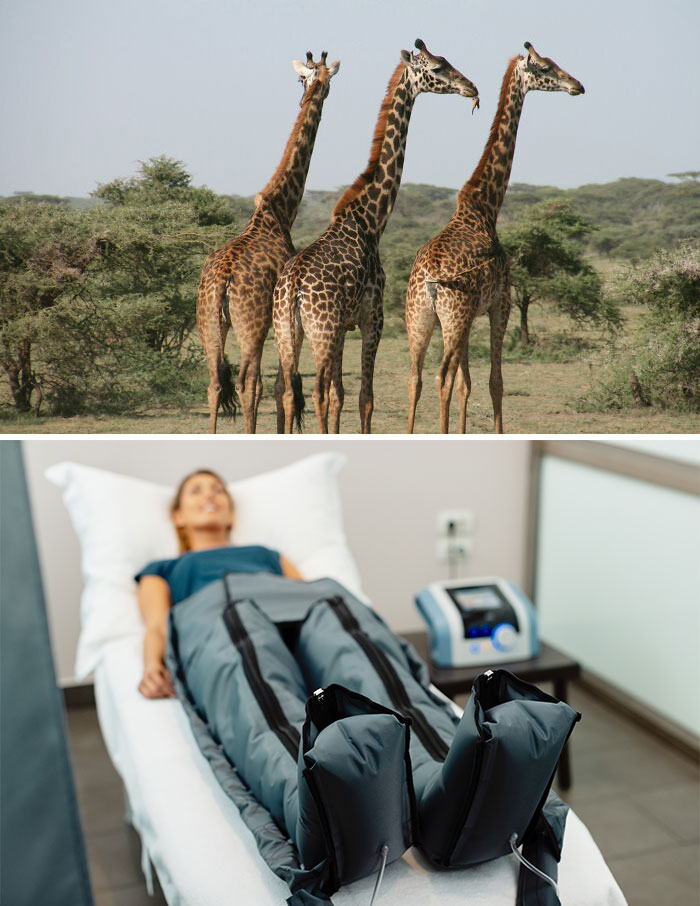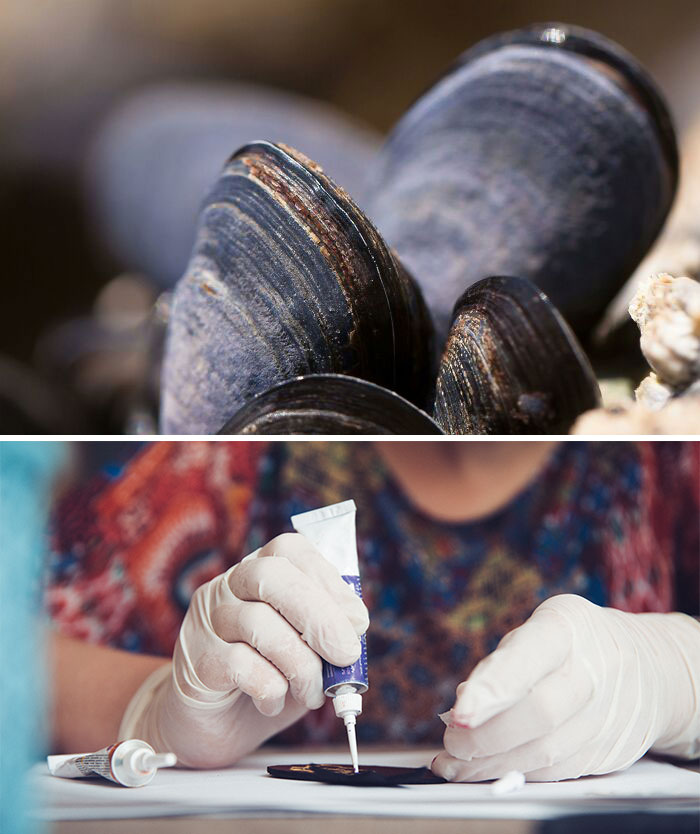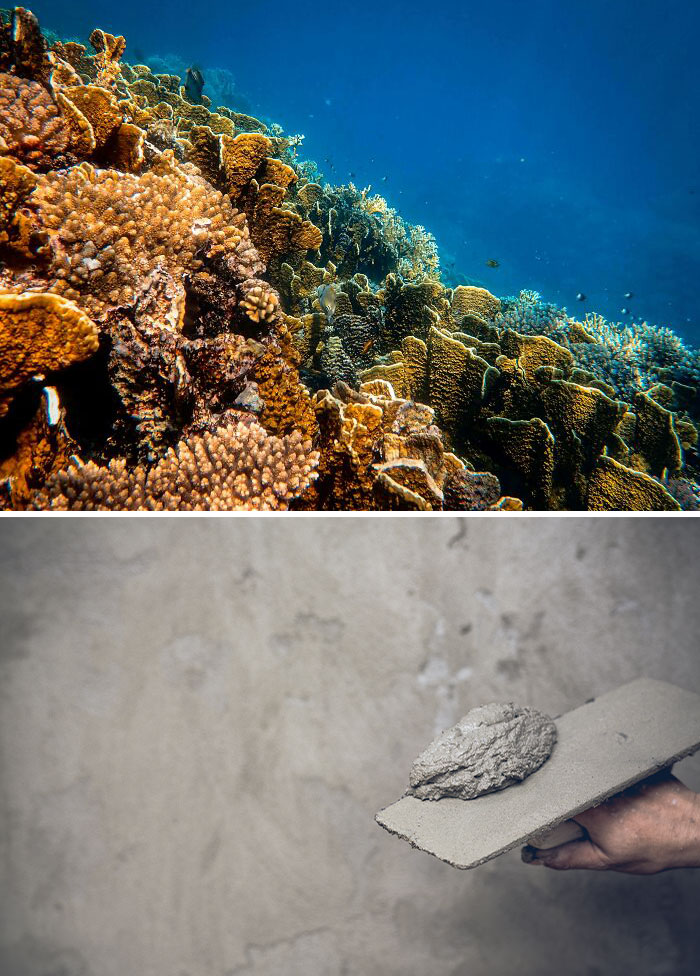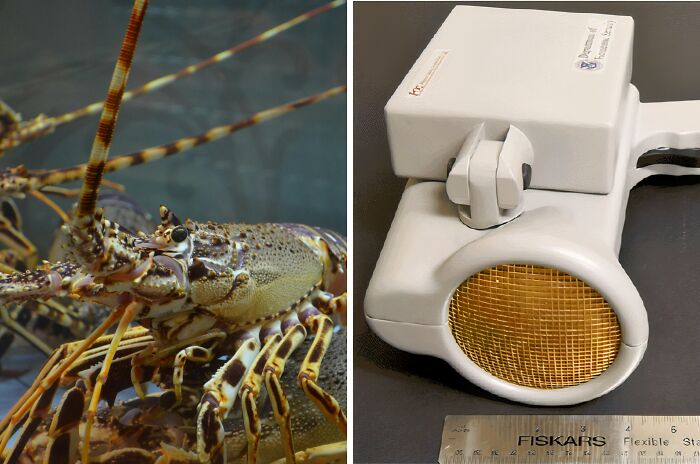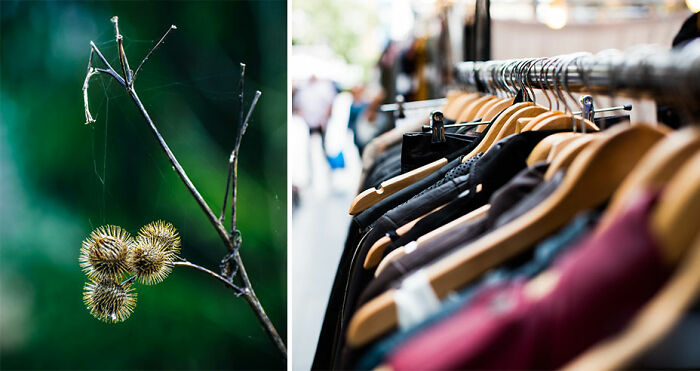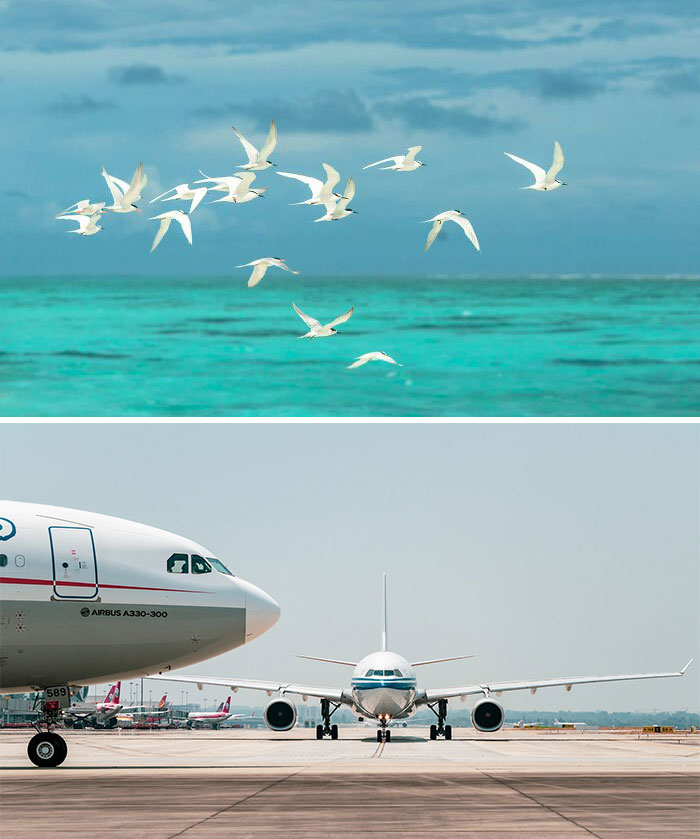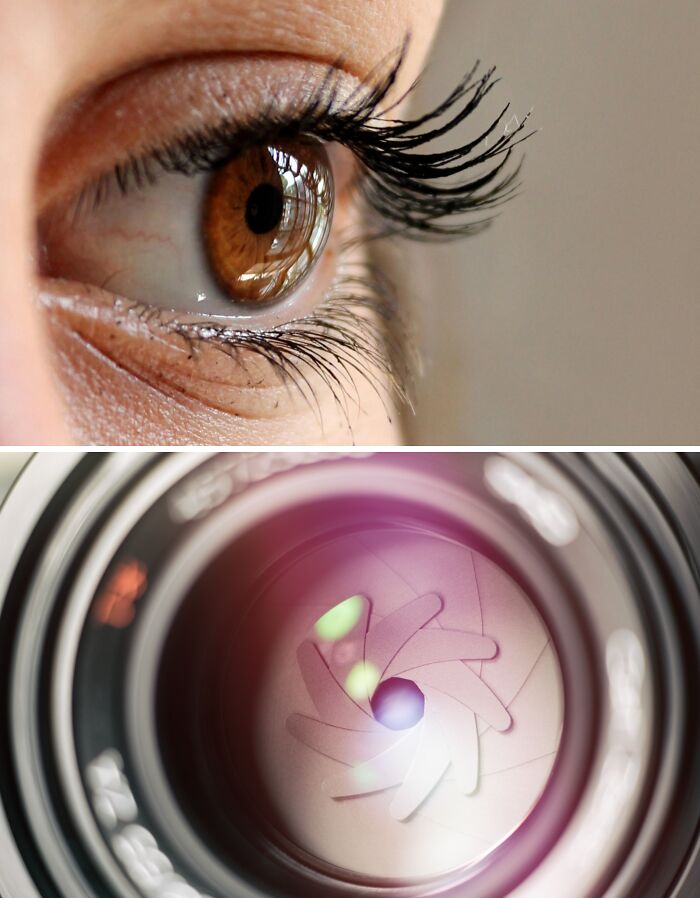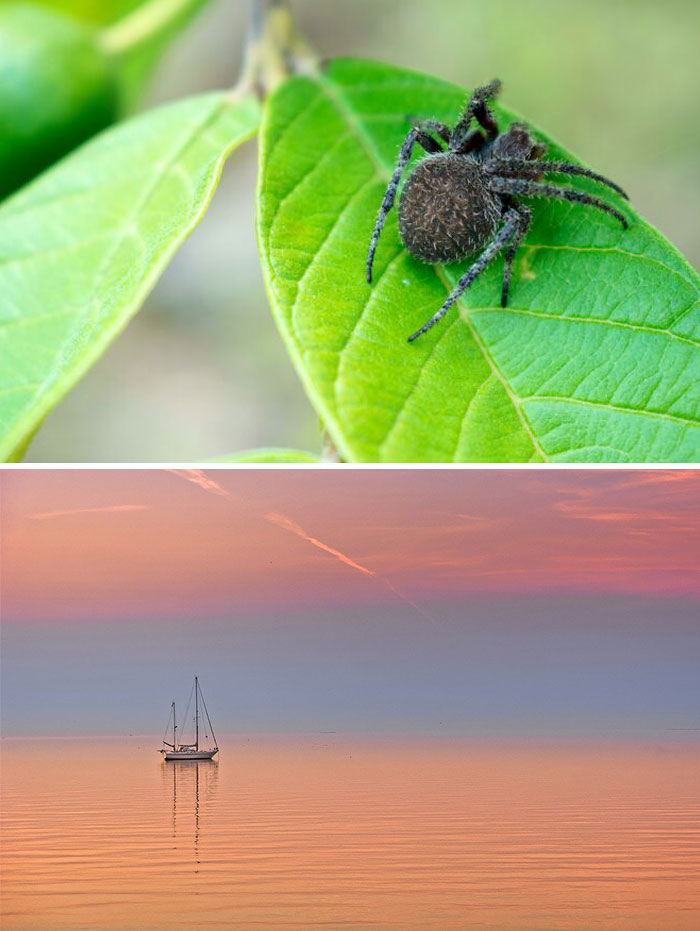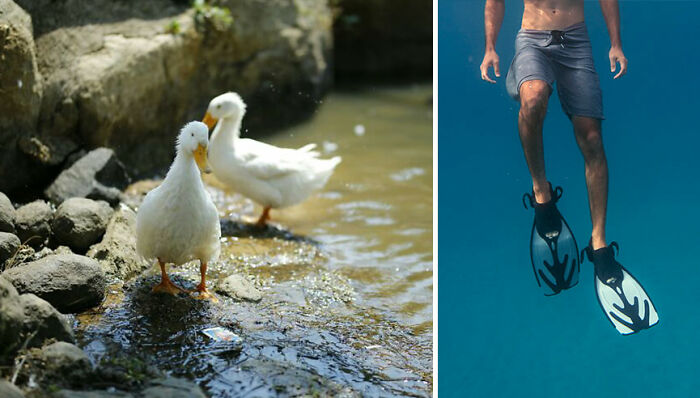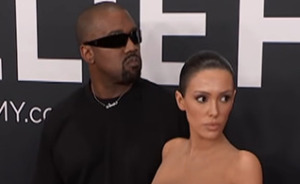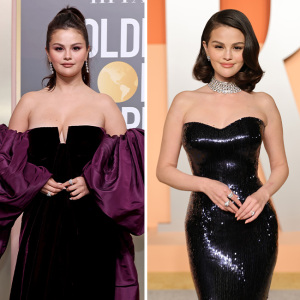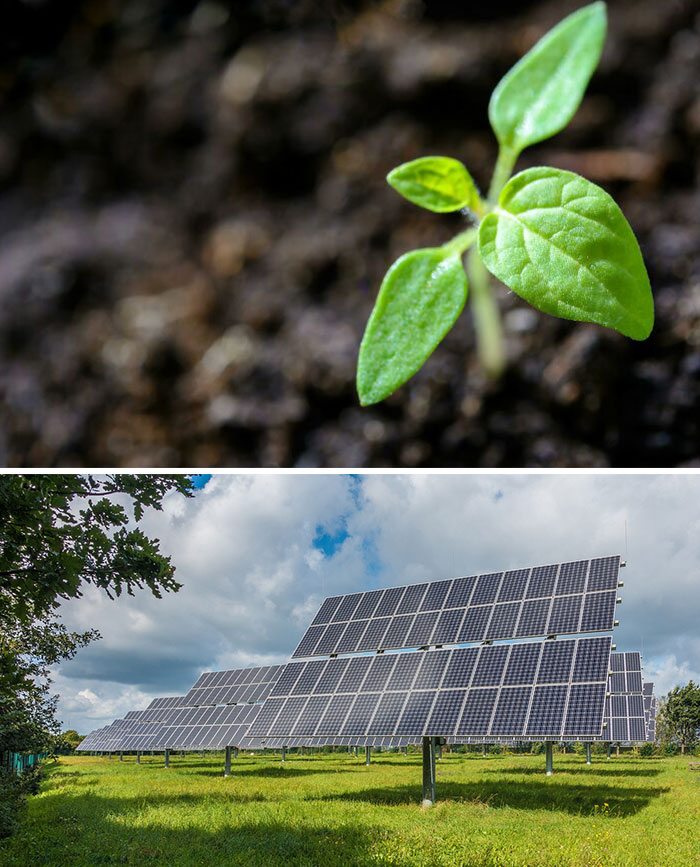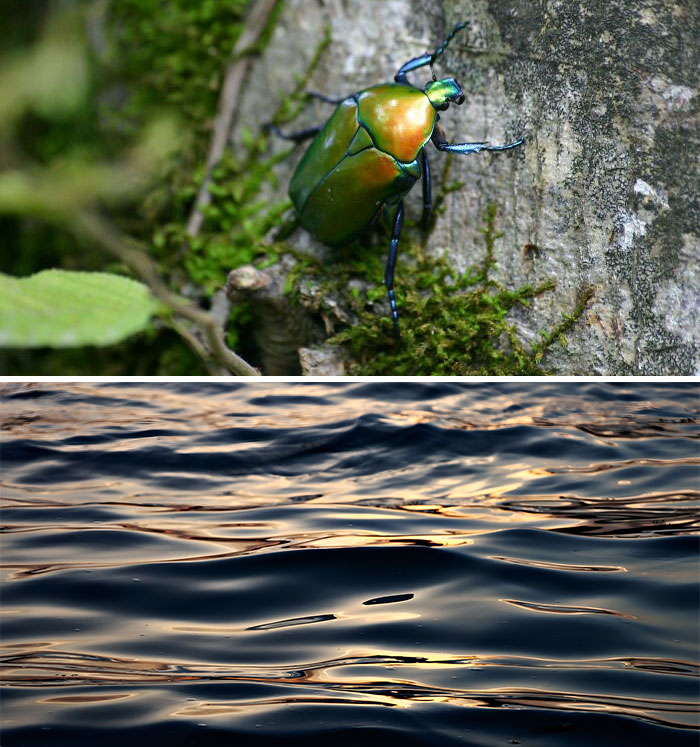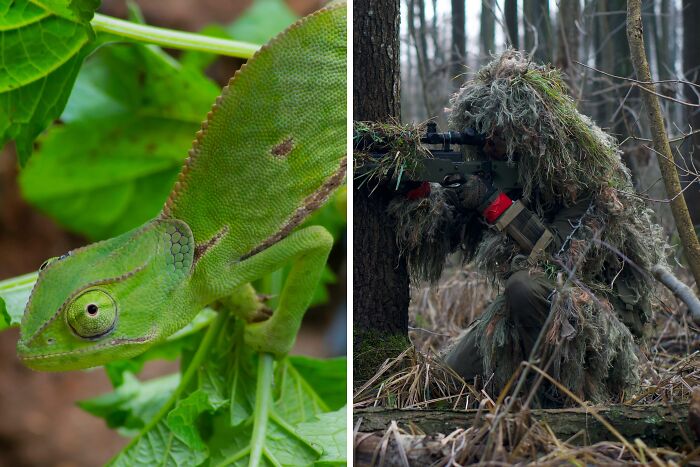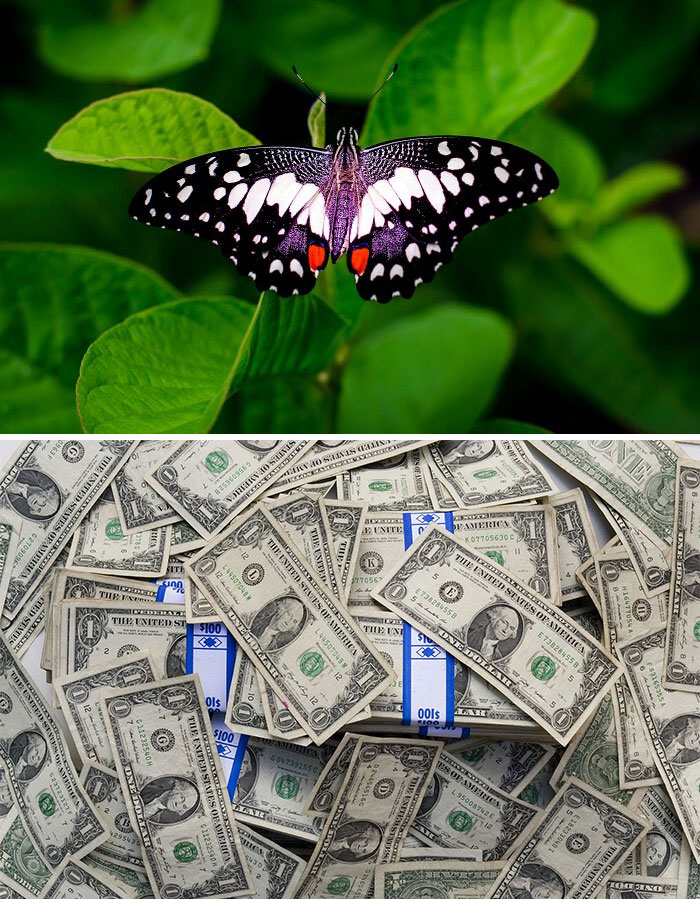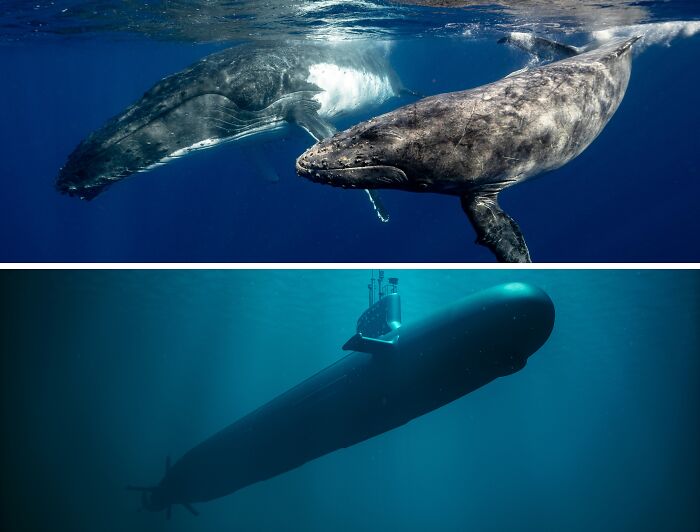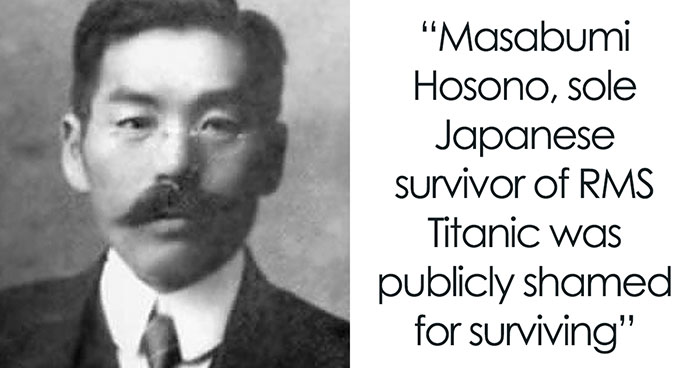Nature has always been a powerful source of inspiration, with inventors diving into the world around them for new ideas. From the anatomy of animals to the behavior of plants, some of our most incredible creations—like wetsuits and solar panels—are based on our planet's genius designs. If we want to build a more sustainable and efficient future, we need to pay attention to the principles that shape our environment. To give you a glimpse of how amazing this connection can be, here's a list of man-made objects that fit the bill.
This post may include affiliate links.
Bird Safe Glass
Every day, hundreds of birds die from flying into glass windows. This doesn’t just affect birds but also poses a risk to property owners. To reduce such accidents, a company called Ornilux created bird-safe glass. They imitated the strands of a spider web, which are visible to birds, unlike the case with transparent glass. The bird-safe glass features crisscross UV patterns.
Honestly, I always thought worrying about birds hitting glass was just ridiculous considering major problems affecting the environment. I just heard a report on maybe NPR (can't remember for sure) and there are a huge number of birds who die this way - far more than I thought. I still don't know if it's worth the added resources (which would affect the environment, also), but at least now I'm not so poo-poo about it.
We get bird strikes on some of our windows a couple of times a year, and it's only a bungalow. Sometimes the bird is ki||ed on impact, but more often they're just stunned and sit awhile recovering before they fly off again. But if the building was higher, the fall after the strike would more often prove fatal. Our modern glazed skyscrapers are deathtraps for birds.
Very little. It took me a while but I found this: "ORNILUX gained inspiration from spiderwebs to develop a transparent, but bird-friendly glass. Every year, hundreds of millions of birds are killed due to collisions with glass. Spiders weave UV-reflective strands of silk into their webs to prevent birds from flying through them. ORNILUX features a patterned, UV-reflective coating in its glass. The coating is visible to birds but is virtually transparent to the human eye."
Load More Replies...Self-Cooling Architecture
Is the termite a pest or a muse? It depends on who you ask. While many people view termites as unwanted houseguests, at least one architect is looking to the ingenious self-cooling designs of termite mounds for inspiration. Zimbabwean architect Mick Pearce observed a termite mound on a golf course and noted its shape and ventilation seemed ideally suited to the environment. He incorporated the termite mound design into buildings in Harare, Zimbabwe, and Melbourne, Australia. In each structure, cool air near the ground is channeled upward and hot air at the top of the building is emitted through chimneys.
Brilliant. Saves a lot of energy while being kinder to the environment.
A number of desert countries use traditional architecture in the same way
This is the one in Melbourne [https://www.mickpearce.com/CH2.html#:~:text=Melbourne%20Council%20House%202%20(CH2,fresh%20air%20during%20the%20day.] It doesn't say how much cooler but does say "Melbourne Council House 2 (CH2) is a multi-award winning and inspirational building that has reduced CO2 emissions by 87%, electricity consumption by 82%, gas by 87% and water by 72%. The building purges stale air at night and pulls in 100% fresh air during the day. The building exterior moves with the sun to reflect and collect heat, and turns sewage into usable water. "
Load More Replies...1. The cooler air will be drawn from foundation/basement levels below ground and will be several degrees cooler than the ambient temperature. 2. The whole point of this design is to control and channel the air flow to ensure that it does indeed rise through the building. 3. Where did you get those numbers from? The post doesn't say anything about 35C.
Load More Replies...Wetsuits
Unlike whales, beavers don’t have layers of blubber to keep them warm when they dive into chilly water. Instead, their thick fur traps air among the individual hairs, keeping the mammals warm and dry. In 2016, a team of engineers at MIT sought to mimic this quality in a wetsuit covered with rubber “hairs,” specifically designed for watersports athletes like surfers. Just like beavers, the athletes would be kept warm by air trapped on the exterior of the suit.
I imagine it's still in the research/testing phase XD The articles that I found announcing the research are from 2016, and nothing since - so I imagine it's still undergoing testing.
Load More Replies...It's primarily the oils in beaver fur that repel water thus allowing the fur to remain insulting as the oil keeps the water away from the skin and keeps the animal warm.
Wind Blades
Humpback Whales are one of the largest weighing animals of the world, yet they are profound swimmers, which attributes down to its flippers (fins). They have warty ridges on the front edge of their fins, called tubercles, reasoning to its swimming speed and its ability to change direction instantly.
A Scientist named Frank Fish noted this peculiarity and concepted the idea to the wind turbine blades and resulted out with increase in speed of the blade and maneuverability of the blade to the wind direction, generating more power.
A firm called WhalePower also scrutinized this and is delivering blades inspired by Humpback Whales’ fins. They account that this proceeded to improve safety, performance of airplanes, fans and more, besides thickening efficiency.
Upvoted for what this relayed, despite the many grammar mistakes. I would have liked even a single sentence explaining what changes were made to the blades based on the whale's anatomy. Still, if true, this pretty cool.
https://whalepowercorp.wordpress.com/our-technology/
Load More Replies...Humpback Whales weigh more than almost any other animal in the world, yet they are nimble swimmers due to their lateral flipper-like fins. These fins are lined with warty ridges, called tubercules, along their front edges. These tubercules are what enable the whales to swim with such speed and to change direction so quickly. A scientist named Frank Fish noted this attribute and reapplied the concept to the blades of wind turbines. This resulted in both an increase in the blades' speed of spin and the capacity of the blades to turn according to the direction of the wind. This combination significantly increases the turbines power generation. The company Whale Power also capitalized on Fish's discovery and is delivering blades with improved safety and performance for use in aircraft, fans, and other applications.
Adhesive Climbing Gear
Gecko toes have the unique ability to adhere to most surfaces, including smooth glass. In 2014, a team at Stanford University scaled up the sticky structures found in tokay gecko toes to create a gecko-inspired climbing device. A human test subject was able to “walk” up a glass wall by wearing adhesive pads on his hands and feet.
“Gecko feet are designed to stick to things. They have millions of teeny tiny hairs on their feet called setae. On each of these hairs there are hundreds of thousands of pads called spatulae that stick to surfaces. Although it might surprise you, these pads are not suction cups. Geckos are able to stick to these smooth surfaces because of something known as Van der Waals forces. A Van der Waals force is a relatively weak electrical-like force similar to the electrostatic you see when you take warm clothes out of a dryer without fabric softener and everything sticks together. They are also the reason that individual water molecules stick together in a glass of water. Each of the gecko’s spatulae is able to stick to the surface by brushing along a surface and creating a bond, which is broken when the gecko decides to take its next step. Because there are SO MANY spatulae on a gecko’s feet, this bond is 1000x stronger than what is needed to hold its weight.” Source: https://shorturl.at/YNzLB
Oh yeah, that's it. Suction cups didn't feel right.
Load More Replies...The sticky structures, if I remember right, are Itty bitty suction cups. These are all examples from classes I took at university in 2014. I will have to see if the biomimicry institute is still up and running. They were developing some things.
But is that what is pictured? Looks more like a crazy stair-stepper climbing device?
yes, thats whats pictured. https://www.youtube.com/watch?v=Mw-tol5ur84
Load More Replies...Needles
If you’re afraid of getting your annual flu shot, you might take comfort in a super-tiny needle inspired by the anatomy of the mosquito. The insect's proboscis can quickly penetrate its target’s skin, often without the subject even knowing it’s there (an anesthetic substance in their saliva also helps make their bite less painful). This ability was the inspiration for creating microneedles designed to minimize pain.
The pharmacist who gave me this year's flu vaccine was very excited to tell me that the tip of the needle had been beveled *four* times to make it as sharp as possible. That, and the needle was tiny. I barely felt it! I got my Covid injection at the same time (other arm) and the needle was "normal", so the comparison couldn't have been better. The next day, I could still see the mark of the Covid needle, but nothing on the flu side.
Solar Panels
While both solar panels and plant leaves harvest energy from the sun, a team at Princeton University took biomimicry in solar panels a step further by adding folds to solar cells. The folds mimic the natural creases found in leaves, channeling more light into the cell. The researchers claimed in 2015 that the leaf-like cells generated 47 percent more electricity than those without folds.
Gotta shut that s**t down. A healthy ecosystem and softer footprint isn't good for profit margins. Just a guess though.
Load More Replies...Self-Cleaning Paint
Lotus plants are known for their aquatic beauty and as a symbol of longevity in some cultures, but you probably didn’t know that they’re also superhydrophobic. The surface of the lotus plant’s leaves repels dirt and water so well that this self-cleaning quality was dubbed the “lotus effect” in 1977.
In 1999, the German building company Sto released an outdoor paint called Lotusan. When dried, the paint’s microtexture mimics the surface of the lotus leaf to repel moisture and dirt from exteriors.
Sometimes their choice of picture makes no sense at all
Load More Replies...Lotus plant leaves are "superhydrophobic" unlike many Republicans who are "superhomophobic".
1977..learned how well lotus leaves repel moisture and dirt. Execs..figure out how to use the knowledge to make money off our desire for convenience. Logical next step. We can make an argument it will contribute to less water usage because you won't have to wash your house down as much but that isn't enough. The application of these technologies seems to lean heavily on their money making potential for a company by appealing to our pollution guilt. Just something to think about.
Bullet Trains
The Shinkansen Bullet Train in Japan is known for its aerodynamic shape that decreases the amount of sound the train makes while entering and exiting tunnels at speeds of 150 to 200 mph. The trains were modeled on the long, narrow beak of the kingfisher, a bird that hunts fish by diving into bodies of water with little to no splash. The shape of the train also allows it to travel 10 percent faster with about 15 percent less electricity.
Meanwhile the flat-fronted Tube sends a noisy gale down into the station minutes before the train arrives
Shark Skin
In recent years, swimmers have broken one record after another. This is very much the result of improved swim suits, and one of the leading manufacturers of swimwear has found inspiration for its fastest swim suit – Speedo Fastskin – by studying the skin of sharks. "There are ten scales per millimetre on the skin surface of a shark, and they work a bit like the indentations on a golf ball," explains Lenau. "The scales make lots of micro-turbulences where water whirls around close to the body surface and reduces the drag effect of the outer layers of water around the body." "This is what is exploited by Speedo Fastskin. By imitating the micro-structuring of the shark's skin surface, it gives the swim suit a lower drag effect and allows the athletes to move faster through the water." The same principle can also be applied to ships. German company Vosschemie produces a hull paint called Haifischhaut, which reduces the drag effect and allows ships to glide more easily through the water.
Robotic Arm
Composed of over 40,000 muscles, elephant trunks are as nimble as human hands, able to pick apples from a branch or rip an entire tree out of the ground. Their versatile design has also inspired a robotic arm. The German company Festo has developed the Bionic Handling Assistant, an appendage that can be used to alter handling technology for human-machine cooperation.Wielding four metallic claws, the robot learns just like a human baby would—through trial and error. By continually reaching for and grabbing objects, it works out which muscles to move. The robot is able to memorize changes in its position through adjustments in pressure within the tubes that feed its artificial muscles.Made of polyamide, this structural material is strong enough to lift heavy weights yet agile enough to perform delicate procedures, such as picking up an egg. The trunk proves to be a benefit for factories, laboratories, and hospitals, where it provides additional handling for human-directed projects.
Drones
The albatross is a majestic, ocean-faring bird that truly soars, meaning it rarely flaps its wings to fly. Instead, it uses the wind to fly more than 600 miles a day. Researchers at MIT are using this flight design to develop drones. They’re hoping to create a fixed-wing, wind-propelled drone that would be able to fly overseas without stopping.
This invention will enable overseas drone warfare. Hooray humanity.
History will label this era with phrase "the drone wars".
Load More Replies...This looks a lot like the one distance drone designed in Australia in about 1995 to me.
LED Light Bulbs
Fireflies help make LED light bulbs more efficient. The bugs' lanterns have microstructures, or asymmetrical microscopic projections, that release light. Researchers from Penn State found that adding microstructures to the surface of LEDs, which typically have symmetrical projections, allows more light to escape, making them more efficient and improving light extraction by 90 percent.
I hate how much they overcharge on LED light bulbs they literally cost $/£/€3 to $/£/€4 to make. Just because they last longer and are environment friendly doesn't mean they should be charging three time that amount for them. And the companies that want $£€50+ for one blub are really milking it
The cost to manufacture the product is a small percentage of the cost of getting it into the end user's hands.
Load More Replies...Lunar Rover Tires
Camels make the list again! Bridgestone is developing a special type of tire that mimics the two-lobed toes of camels. The tire, which was introduced at this year's Consumer Electronics Show, is comprised of two lobes of braided steel and is designed to be able to easily trek over hills of fine-grained, abrasive lunar dust. Tests in a simulated lunar environments will soon confirm whether camels will be just as helpful on the moon as they are on Earth.
Thermal Cameras
Pit vipers can detect their prey in complete darkness using specialized sensory organs that perceive infrared radiation. This ability inspired the development of thermal imaging cameras.
BP does a phenomenally bad job of finding appropriate pictures
Load More Replies...Yeah, only no. Thermal imaging (i.e., infra-red photography) was a thing in 1910, well before they'd figured out what pit vipers were up to. https://en.wikipedia.org/wiki/Infrared_photography#History
Saltwater Desalination For Irrigation
Camels live in the driest climates on earth, and yet they’re somehow able to function with limited water resources. So scientists have taken a hint. Camels conserve water by cooling exhaled air during the night, extracting water vapor from the exhaled air, and absorbing and holding onto water molecules from the surrounding air.
Researchers in the Sahara Desert are using the same technique to remove salt from saltwater to irrigate plants by using cool ground water to evaporate warm sea water, which is then condensed in a salt-free form.
Venous Leg Ulcers & Compression Therapy
Venous leg ulcers in humans is a kind of an ulcer, due to abnormal vein function in the legs. The common causes for the disease include blood clots, injury, inheritance, ageing, lack of physical activity and obesity. Medical officials suggest compression therapy for diagnosis; the idea being stolen from Giraffe.
Giraffe is one of the tallest animals in the world, which also means their blood has to circulate a lot of area through long legs. To clear it up, the distance between a giraffe’s heart and feet is twice that of humans. And they also have smaller calf muscles, no moving toes and minimal ankle joint movement. Yet, they don’t suffer from edema due to it’s extremely tough, fibrous and non-elastic skin. The skin of giraffe creates a rigid sleeve that optimizes the venous return.
Scientists derived this aspect into the medical field as compression therapy for the cure of the same.
Pretty sure compression stockings have been around forever. Not sure how much they were inspired by the giraffe.
Adhesives
These underwater mollusks have inspired scientists to make one of the strongest adhesives on the market. Researchers have cracked how mussels attach to wet surfaces, and have replicated it into an adhesive for commercial use. They created a biomimetic polymer model that contains proteins with the amino acid DOPA, which provides the glue’s adhesion. In a study published in the journal ACS Applied Materials and Interfaces, scientists found that the glue performed 10 times better than other commercial adhesives when used to bond polished aluminum.
Cement
The quest for sustainable building materials has led us to nature’s treasure trove of solutions.
From bio-inspired concrete that heals itself like living organisms to biodegradable alternatives that reduce waste, examples of biomimicry in sustainable building materials are reshaping the construction industry.
These innovations not only minimize environmental impact but also enhance the resilience and longevity of our built environment.
Better X-Ray Vision
X-rays are difficult to work with, which is why the X-ray machines at airports are so bulky. However, scientists are now copying a technique used by lobster eyes to gain better X-ray vision.Instead of refraction, or the bending of light by a lens, lobsters see using reflection. Their eyes are covered in squares, similar to flat mirrors, which reflect light at precise angles to form pictures from any direction.This design proves useful to astronomers, who yearn for telescopes that can focus X-rays from certain areas in space. While an ordinary mirror would only allow X-rays to pass through, the shapes of the lobster’s eyes are used to create arrays of tiny, square, hollow tubes made of lead glass. Curved into eyelike spheres, the material reflects X-rays and is packed into telescopes.These crustaceans have inspired other inventions as well, such as microchips and the Lobster Eye X-ray Imaging Device, a “flashlight” that can see through steel walls 8 centimeters (3 in) thick.When the device sends out a string of low-power X-rays through a wall, a few bounce back off the objects on the other side. These signals are funneled through the tubes and create images just like the lobsters’ eyes do. This invention may prove important in locating stolen or illegal goods.
Velcro
Created in the 1940s by Swiss engineer George de Mestral, VELCRO is one of the best-known examples of biomimicry. While hiking, de Mestral noticed that the hook-like structure of burdock burrs allowed the seed pods to stick to his dog’s fur. He decided to explore the potential of creating a clothing fastener using the same technology.
When we were teenagers, we used to put burdock root in other girls' sleeping bags at summer camp.
Load More Replies...Airplanes
While modern airplane design has evolved far beyond the practices of birds, the first designs used what little info humans had about flight—which they obtained by studying birds in the sky.
In the design of their first piloted aircraft, called the Flyer, the Wright brothers mimicked how air increases lift as its flows over the curve of birds’ wings. Birds can also “warp” their wings to remain aloft and streamline their flight. Orville and Wilbur Wright engineered the aircraft so that a portion of its wings “warped” back and forth to produce the same effect.
Interesting how humans started by trying to match bird flight, but eventually realised that they'd have to change a few things to make it work for them (ailerons and flaps, instead of wing warping, for instance). And, of course, engines instead of flapping wings. The early history of human flight was basically the history of developing an engine powerful enough to drag the inefficient early wings through the air at a speed sufficient for flight. Ideas are cheap but developing them and getting the bugs out takes time and effort.
Cameras With Wider Field Of View
The curved surface of the human eye facilitates a wider field of view than has ever been possible using a camera. The challenge for engineers was to transfer microelectronic components onto a curved surface without breaking them. Yonggang Huang of Northwestern University and John Rogers of the University of Illinois built a digital camera of the same size, shape and layout of the human eye, and developed a mesh-like material that hold electronic components onto the curved surface. This technology would enable photographs that are entirely clear and focused, unlike today’s cameras which can focus only on certain areas.It may even enable the development of an artificial retina or bionic eye.
I hope the rest of this is more accurate than the first sentence. The human eye has a horizontal field of view of about 130º, although both eyes give us a field of view of about 180º. While we can "see" a lot at the periphery it's only the center that's clearly in focus, and really seeing things at the periphery requires turning our eyes. Camera lenses with a field of view up to 180º have been around at least since I got interested in photography over 40 years ago. Like the eyes, a camera lens has to be focused for distance, but a very wide angle lens has a very deep depth of field, and the entire image is sharp, not just the center.
Except a curved sensor like the retina minimizes or eliminates the distortion you see with a camera wide angle lens
Load More Replies...The link is from 2017. Anyone got 2025 news on this? Is this still worked on, bought by someone else and dropped, or could not be done now?
Unsinkable Metal
"Unsinkable" probably isn't the best word to use when talking about ships, but despite what we know about the Titanic, researchers at the University of Rochester have designed a new type of metal that actually does float no matter how much you try to prod it underwater. They even tried puncturing the material and it still wouldn't capsize.
The researchers were inspired by spiders and fire ants that can float or skim on the surface of water for long periods of time. But just how do they do it? The answer: They trap air bubbles. Argyroneta aquatic spiders, for instance, can create an underwater web, shaped like a dome, by filling it with air with their superhydrophobic legs and abdomens. Fire ants, for their part, create a sort of "raft" by trapping air with their superhydrophobic bodies.
"Buoyant" The quite common word you're looking for to describe an object that floats is "buoyant".
As contrasted with a 'girl ant' who lies on the edge of the pool looking beautiful?
Load More Replies...How did they make metal buoyant? What processes and applications were used? If there is added materials are they safe for the ocean and it's life? What is the difference in cost between this buoyant metal and what is being utilized now? aRe the materials used to make it easy to access, plentiful and renewable? and are we making sure to minimize toxic extraction in regards to this new technology? Are we going to use it at all if it really is best for the planet and all life?
Flipper
Ducks swim in water with the help of webbed feet. Studying the ducks’ webbed feet, inventors were able to come up with the idea of flippers and fins. So order to dive in the sea, divers use flippers to push themselves to move forward. These flippers serve as oars used in boats for movements. Flippers and oars help divers and boat riders to change their direction in water which improves efficiency with less oxygen consumption.
Much like fish, divers who know what they're doing use fins to maneuver. Whales, seals and turtles use flippers to maneuver.
Solar Panels
Photosynthesis, the process by which plants convert sunlight into energy, serves as a remarkable teacher for sustainable energy solutions.
Solar panels inspired by the structure of plant leaves capture sunlight with unprecedented efficiency, providing clean and renewable energy for homes and industries alike.
In the end, these innovations stand at the forefront of the fight against climate change, offering a sustainable energy future. Though, it needs homeowners who realize solar as an opportunity rather than a risk and sustainable leadership to drive the change towards a more sustainable world.
Water Collection
The Stenocara beetle is a master water collector. The small black bug lives in a harsh, dry desert environment and can survive thanks to the unique design of its shell. The Stenocara's back is covered in small, smooth bumps that serve as collection points for condensed water or fog. The entire shell is covered in a slick, Teflon-like wax and is channeled so that condensed water from morning fog is funneled into the beetle's mouth. It's brilliant in its simplicity.
Researchers at MIT have been able to build on a concept inspired by the Stenocara's shell and first described by Oxford University's Andrew Parker.5 They have crafted a material that collects water from the air more efficiently than existing designs. About 22 countries around the world use nets to collect water from the air, so such a boost in efficiency could have a big impact.
The only thing that is guaranteed to have a bjg impact on slowing down the deterioration of the environment and alarming rate of our diminishing resources is population control. People need to stop reproducing at the outrageous levels of the last century.
That sure does sound good in your ears, don't it? I worry what that will do to the global water cycle. That system is fragile and completely ignored. New water isn't magically generated. Water just changes form and location on the globe. When our water is returned to the earth upon our death it will enter that process again. What will extracting more water from one location do to the water needs of other ecosystems and life further on in that process? If we really are to shift how we consume we need the full picture.
It jas huge potential to be exploited that's for sure. Done correctly, if only sourced from regions with excess water, where it's damaging to that ecosystem it would work. But yes, I too fear it could end in the hands of a greedy corporation or country and the ramifications could be devastating.
Load More Replies...Camouflage
Humans adopted camouflage—a survival tactic for species ranging from the chameleon to the polar bear—as our own defense mechanism, most notably in the military and for hunters.
Camouflage works due to its ability to hide the contour, or outline, of the body, because the human eye has a limited capacity to distinguish color patterns from far away.
Animals: Blend in to stay alive better. Humans: Blend in to kill better.
Maybe because most humans think that they're going to do the killing?
Load More Replies...Are there any other uses of camouflage other than hunting and warfare?
Anti-Counterfeiting Money Technology
Counterfeit money is being busted thanks to butterflies. A project called NOtES, from researchers at Simon Fraser University, studied butterfly wings and their iridescence of the Costa Rican morpho butterfly. They created a technology using nanoscale light-interfering structures to create an anti-counterfeiting stamp. It’s more difficult to crack than a hologram and can be “printed” not only on bank notes, but on a whole range of other objects, too.
Taking the profound knowledge found in our natural world to not only consume better but feel good doing it gives me the icks. Biomimicry can give us so much, if we apply the tech with ethics.
Submarine
Studying the whales, scientists came up with an idea to invent the submarine, so as to sail under the vast oceans. The design of the submarines is based on the shape of whales. And like whales, submarines also their sonar system to trace food and avoid hurdles. This ability of measuring distances of targets has also been built in submarine to manoeuvre movements under water.
Whales can stay for long period of time in water and submarines also have this ability.
Were these written by a juvenile AI? Even someone with ESL wouldn't be this bad. "Submarines also use their sonar system to trace food "? Seriously? What do submarines eat?
It's utter nonsense. Scientists didn't invent submarines, and the first submarines have nothing to do with whales. https://en.wikipedia.org/wiki/History_of_submarines
Load More Replies...Haha submarines also have this ability. When they were little baby subs their parent threw em in the ocean to learn how to swim, that is the submarine way. I am.not a fan of anthropomorphizing, (is that a word) anything related to war. Perhaps I am nitpicking.
Every single one is a reason to protect animals, no matter if cute or not, and their habitats. Trump & Co worldwide ideas of mass breeding of humans, ruining nature and natural resources to squeeze every drop of oil out of Earth for cheap gas and declaring science as evil has no future.
If he gets his hands on Greenland gods help us all. Our water cycle is already broken all over the place, poisoned in too many places, used and abused in manufacturing and the list goes on. He wants it for war tactics and resource extraction. That can't happen! We for real need to do everything in our power to stop it. I dont want to hear well that people that voted for him, yada Yada. It's done, now our conversation must focus on what comes next.
Load More Replies...Every single one is a reason to protect animals, no matter if cute or not, and their habitats. Trump & Co worldwide ideas of mass breeding of humans, ruining nature and natural resources to squeeze every drop of oil out of Earth for cheap gas and declaring science as evil has no future.
If he gets his hands on Greenland gods help us all. Our water cycle is already broken all over the place, poisoned in too many places, used and abused in manufacturing and the list goes on. He wants it for war tactics and resource extraction. That can't happen! We for real need to do everything in our power to stop it. I dont want to hear well that people that voted for him, yada Yada. It's done, now our conversation must focus on what comes next.
Load More Replies...
 Dark Mode
Dark Mode 

 No fees, cancel anytime
No fees, cancel anytime 







